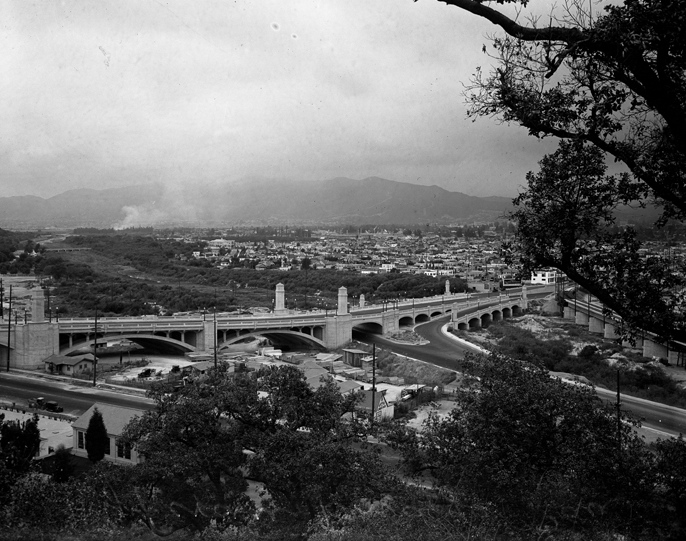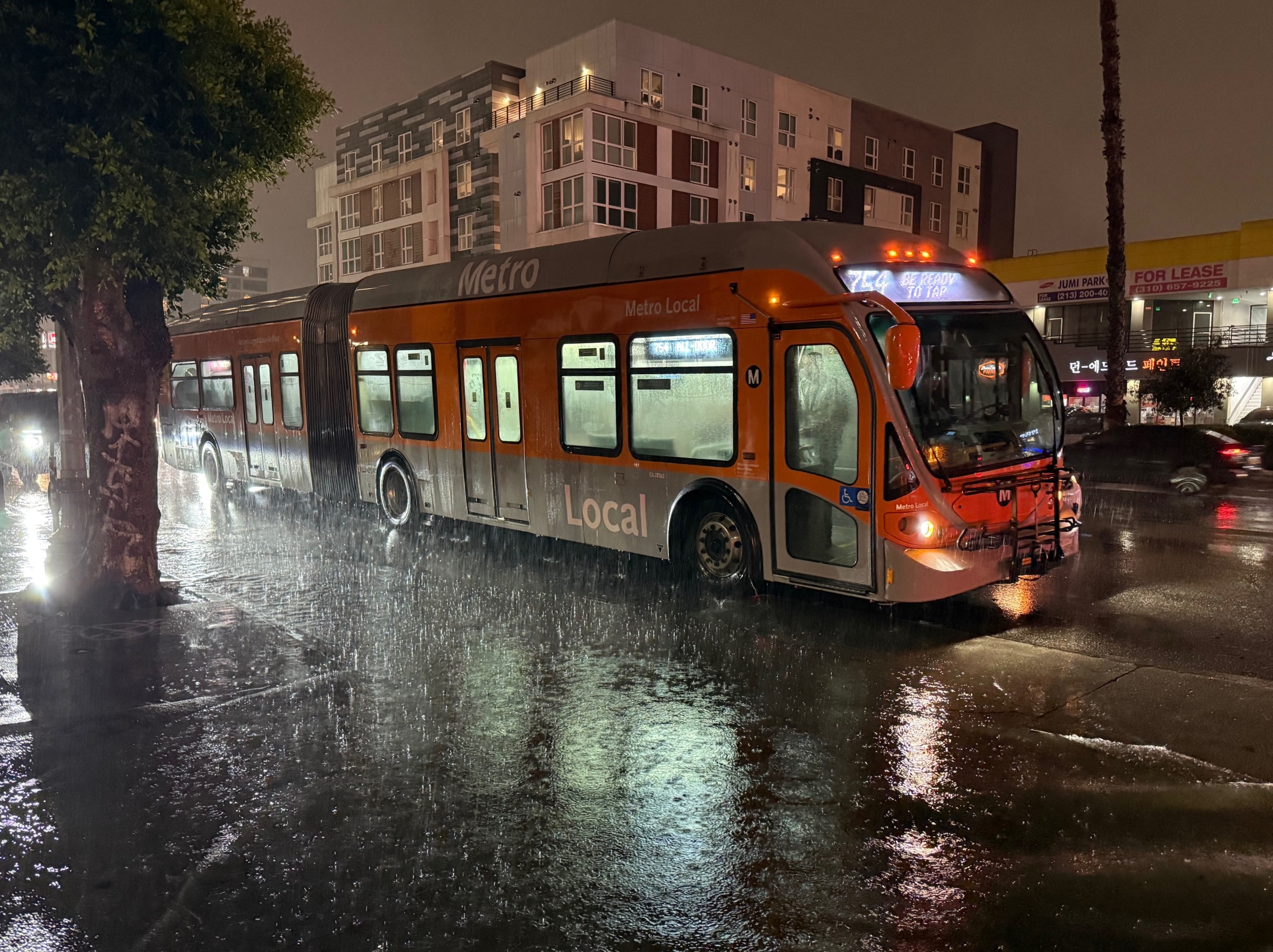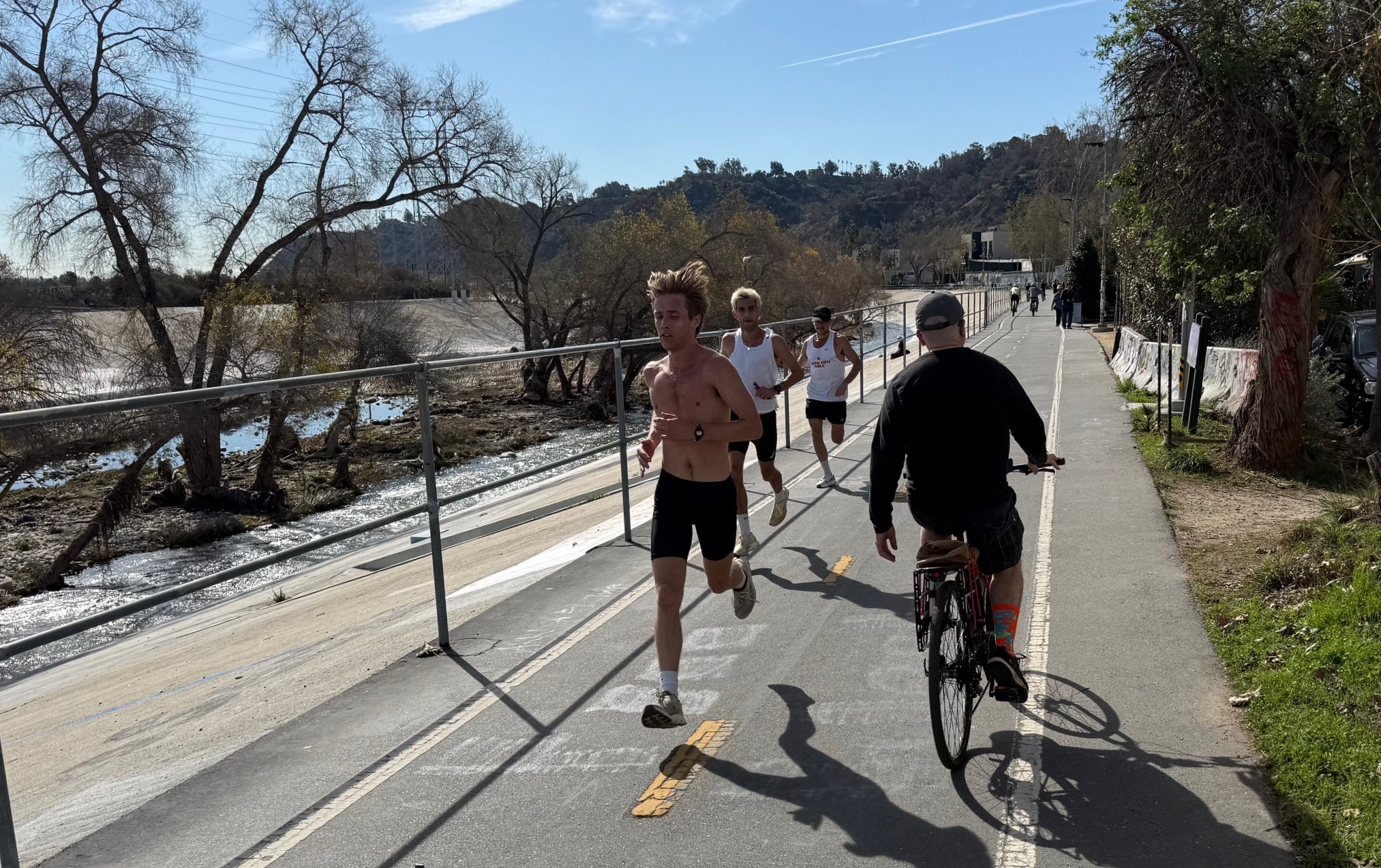
Earlier this week, Streetsblog published an article about how the Hyperion-Glendale Complex of Bridges Rehabilitation Project was giving short shrift to bicyclists and pedestrians and everyone that lived in the area. At the time, based on information provided to us by the Bureau of Engineering, I assumed that the issue could be resolved by arguing for a complete streets approach to the right people.
L.A. Eastsider has a full rundown on all of the proposed changes in the redesign. After reading the article, and hearing from people that attended Wednesday's meeting, I'm a lot more concerned about the bridge project than I was on Tuesday.
The Los Angeles County Bicycle Coalition explains what makes the new design for one of L.A.'s most iconic structures so scary:
Caltrans and BOE are designing Hyperion Ave. to freeway standards with a design speed of 55 miles per hour. Based on that design speed, they are pursuing a median crash barrier, banked turns, and supersized car lanes. Those decisions leave no room for bike lanes and just a narrow sidewalk on only one side of the street. Simply designing the street to normal city street standards would leave enough room for everyone.
Why in the world would anyone design a bridge that connects two smaller communities in Los Angeles to be a freeway in today's world is beyond me. Fortunately, Streetsblog contributor Don "Roadblock" Ward was at this week's community meeting on the bridge and he left the answer in the Streetsblog comments section:
I went to this meeting last night. After some pushing and prodding of the smiley people we found out a couple important things... One is that the CURRENT average speeds on the bridge are 55MPH. 55!! Thats WAY over the posted speed limit.
The second thing we found out is that the proposed 12' and 14' lane configuration with crash barriers and banked roadways are FREEWAY grade designs intended to FACILITATE 55MPH traffic. This came right from Jeff the engineer's mouth to the crowd. The proposed bridge design is rated for 55MPH.
Yikes! So people are speeding across the current complex of bridges at unsafe speeds, so the answer that Caltrans and the Bureau of Engineering propose isn't a design that would reduce the speeds but a design to accommodate the unsafe speeds to the detriment of every other potential road user. A secondary impact of this design is more traffic moving at an unsafe speed being dumped on the Atwater/Silverlake and Eagle Rock communities.
While the current proposal is a lose-lose, there's still time to halt the project and turn things around. Comments can be emailed to Tami Podesta at Caltrans by October 11th at Tami.Podesta@dot.ca.gov. You might want to carbon copy the elected officials for both sides of the bridge complex at tom.labonge@lacity.org,councilmember.ofarrell@lacity.org, and mayor.garcetti@lacity.org.
Bonus points to anyone that can work in a Disney Land joke into their comments.






